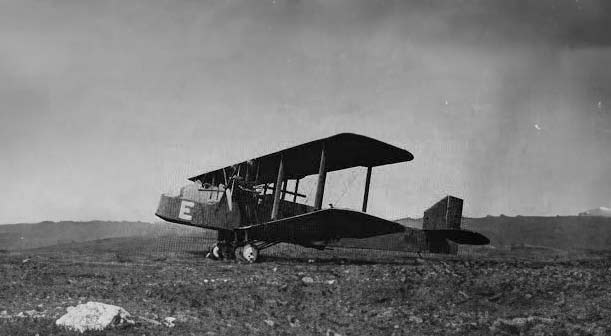The Handley Page Hyderabad: Britain’s first all-metal heavy bomber, serving as a transition into modern aerial warfare post-WWI. This article delves into the historical and technical aspects of the Handley Page Hyderabad, analyzing its design, performance, and military role. As Britain’s first all-metal heavy bomber, the Hyderabad marked a pivotal transition in bomber technology, setting the stage for future multi-engine aircraft designs.
The Handley Page Hyderabad stands as an important step in the evolution of military aviation, bridging the gap between the final years of World War I and the prelude to World War II. It represents the move towards larger, more capable bombers that would become a mainstay of military strategy.
History of the Development of the Handley Page Hyderabad:
Post-World War I, the United Kingdom faced the challenge of updating its military technology to match the evolving strategies of warfare. Air power had proven decisive during the war, and there was a clear need to develop a new generation of bombers that could meet the demands of future conflicts.
The Handley Page Hyderabad was developed by Handley Page Limited, a pioneer in British aviation. The firm had garnered attention during the war with its O/400 bomber, which had played a significant role in the latter stages of the conflict. Looking to the future, Handley Page sought to build on this success with a design that would harness the latest advancements in aerodynamics and materials.
Launched in the early 1920s, the program aimed to create a heavy bomber that would surpass the capabilities of the wartime designs. It was a time of relative peace, but the memory of the war loomed large, and the Royal Air Force (RAF) was keen on maintaining a fleet capable of defending the British Isles and projecting power abroad.
Design of the Handley Page Hyderabad:
The Hyderabad was a biplane design, a characteristic it shared with its predecessors, but it distinguished itself as the RAF’s first all-metal heavy bomber. It featured a wingspan of 22.86 meters (75 feet) and a length of 17.68 meters (58 feet). The use of metal in its construction, primarily duralumin, offered increased strength and durability over the wood and fabric construction of previous bombers.
The aircraft’s biplane design allowed for a more substantial lift at lower speeds, beneficial for heavy bomb loads. However, this configuration also created more drag, limiting its top speed compared to the emerging monoplane designs. Its dual-engine setup, with one engine mounted on each wing, provided redundancy, increasing its chances of returning from missions despite potential engine failures.

Performance of the Handley Page Hyderabad:
Powered by two Rolls-Royce Eagle IX engines, each producing 360 horsepower, the Hyderabad could reach a maximum speed of around 122 mph (196 km/h) and had a service ceiling of approximately 10,000 feet (3,048 meters). With a range of 624 miles (1,004 kilometers), it had the endurance to carry out missions deep into continental Europe.
Compared to its contemporaries, the Hyderabad’s performance was adequate for the early 1920s. However, it was quickly outclassed by newer, faster, and more capable designs as bomber technology progressed rapidly during the interwar period.
Military Use and Combat of the Handley Page Hyderabad:
The armament of the Hyderabad consisted of three .303 inch (7.7 mm) Lewis guns, one in the nose, one amidships, and one in the rear, along with a bomb load of up to 1,800 pounds (816 kilograms). The Hyderabad, however, saw no combat as its service coincided with a period of peace for Britain. It primarily served as a heavy bomber in the RAF, offering valuable lessons for future bomber design.
It was not exported to other countries, and its operational use was confined to the United Kingdom. The Hyderabad served until the late 1920s, at which point it was superseded by the more advanced Handley Page Hinaidi and other bombers that would lead the RAF into the modern era.
The Handley Page Hyderabad represents an era of transformation in aerial warfare. While it did not see combat, its development as Britain’s first all-metal heavy bomber paved the way for the multi-engine aircraft that would dominate the skies in World War II. Its legacy is reflected in the subsequent designs that drew from its pioneering metal construction, ensuring its place in the annals of aviation history as a stepping stone toward the modern bombers of the future.
Back to the Bombers section.